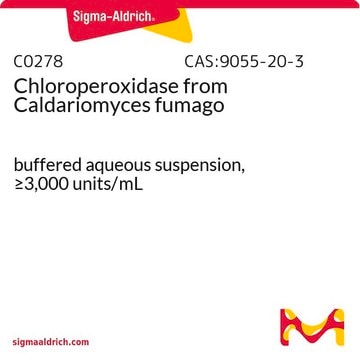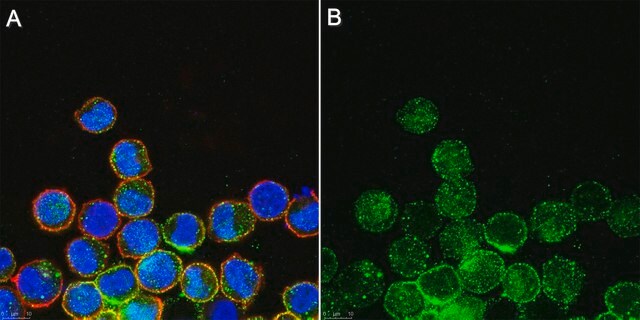C0887
Chloroperoxidase from Caldariomyces fumago
buffered aqueous suspension, 1,000-2,000 units/mg protein (E1%/280)
Synonyme(s) :
Chloride Peroxidase, Chloride:hydrogen-peroxide oxidoreductase
About This Item
Produits recommandés
Source biologique
fungus (Caldariomyces fumago)
Forme
buffered aqueous suspension
Activité spécifique
1,000-2,000 units/mg protein (E1%/280)
Poids mol.
42 kDa
Rapport des absorbances
RZ ~1.0
Température de stockage
2-8°C
Vous recherchez des produits similaires ? Visite Guide de comparaison des produits
Application
Actions biochimiques/physiologiques
Définition de l'unité
Forme physique
Inhibiteur
Code de la classe de stockage
12 - Non Combustible Liquids
Classe de danger pour l'eau (WGK)
WGK 1
Point d'éclair (°F)
Not applicable
Point d'éclair (°C)
Not applicable
Équipement de protection individuelle
Eyeshields, Gloves, multi-purpose combination respirator cartridge (US)
Certificats d'analyse (COA)
Recherchez un Certificats d'analyse (COA) en saisissant le numéro de lot du produit. Les numéros de lot figurent sur l'étiquette du produit après les mots "Lot" ou "Batch".
Déjà en possession de ce produit ?
Retrouvez la documentation relative aux produits que vous avez récemment achetés dans la Bibliothèque de documents.
Notre équipe de scientifiques dispose d'une expérience dans tous les secteurs de la recherche, notamment en sciences de la vie, science des matériaux, synthèse chimique, chromatographie, analyse et dans de nombreux autres domaines..
Contacter notre Service technique







